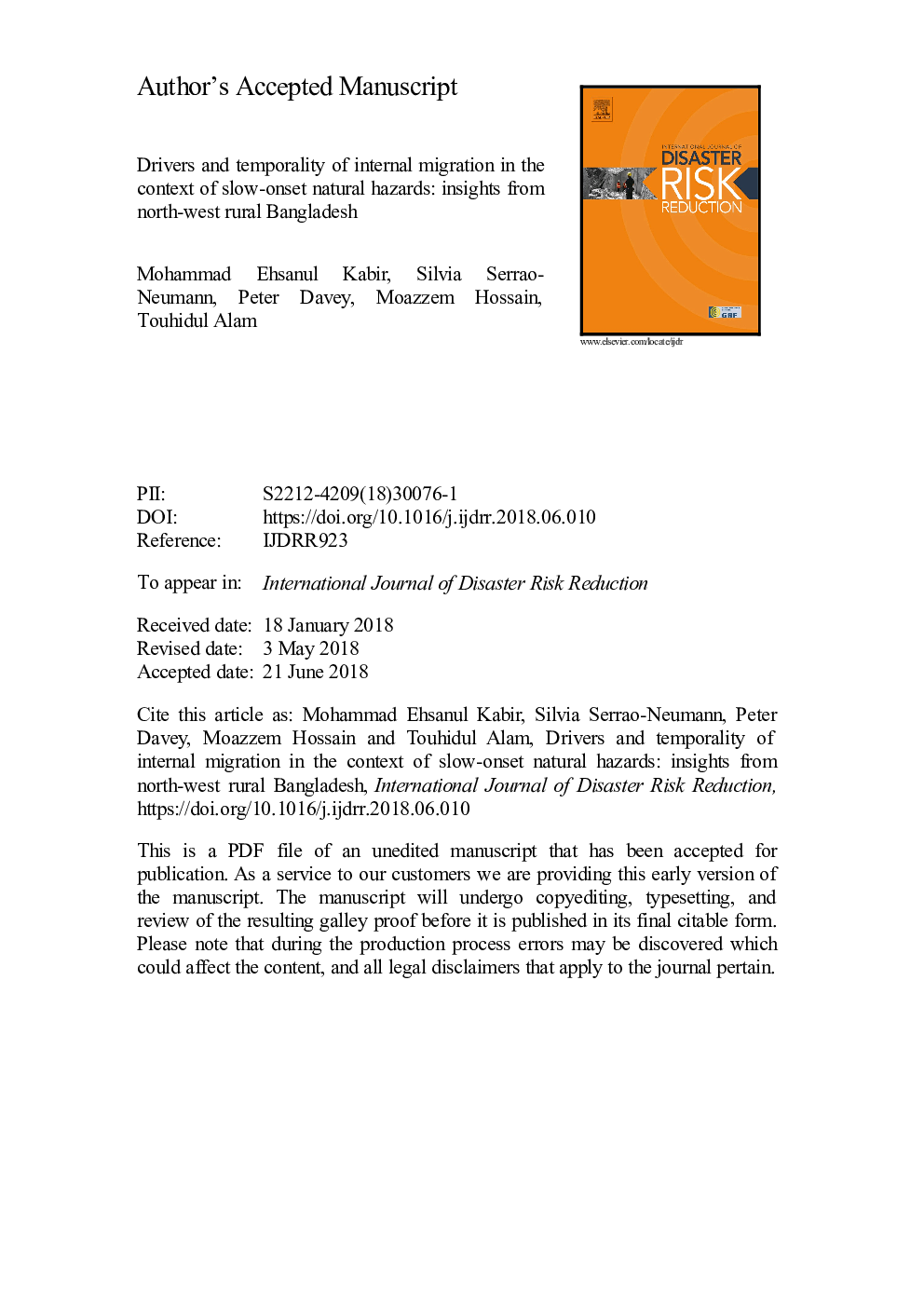| Article ID | Journal | Published Year | Pages | File Type |
|---|---|---|---|---|
| 7470768 | International Journal of Disaster Risk Reduction | 2018 | 30 Pages |
Abstract
This paper examines the association between slow-onset natural hazards and the temporal aspects of human mobility- that is, short-term and long-term internal migration in the context of north-west Bangladesh. The paper contributes to the current understanding on the multiple stressors influencing individual's decisions to migrate from their rural origin, while examining the interplay between factors such as tipping points of migration (identified as drivers of migration), socio-demographic variables, and the contexts of slow-onset natural hazards. The analysis is based on empirical data relating to disadvantaged internal migrants or their household members living in drought-prone and riverine areas. A binary logistic regression model is used to analyse how various factors influence the temporality of migration. Key findings indicate that in the context of the natural hazards studied, financial stress at the household level and lack of economic resources are strongly associated with people's decisions to migrate for the-long or short-term. Based on such findings, the paper argues for diversified policy interventions for different groups of internal migrants in order to address difficulties associated with their mobility to and settlement at new locations.
Related Topics
Physical Sciences and Engineering
Earth and Planetary Sciences
Geophysics
Authors
Mohammad Ehsanul Kabir, Silvia Serrao-Neumann, Peter Davey, Moazzem Hossain, Md. Touhidul Alam,
